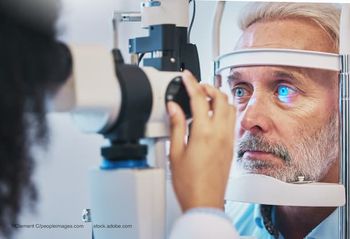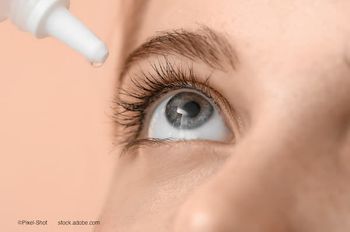
Group declares July as 'Dry Eye Awareness Month'
Women age 45 or older going through menopause are most prone to experience dry eye.
Millions of patients with dry eye rely on bottles filled with artificial tears in an effort to find relief. Yet, many of them will resort to limiting their computer use, taking breaks from reading, avoiding night-time driving or eschewing eye makeup-without realizing that the soreness they are experiencing is a treatable condition.
The campaign hopes to alert people to the syndrome, then motivate patients to seek help from eye-care professionals. Only one-third of patients with dry eye actually seek treatment, said Robin Sears, Allergan Inc.'s director of marketing for Restasis.
Allergan has given the NWHRC an unrestricted grant to alert women-who make up 80% of an estimated 3.2 million sufferers-to the syndrome and encourage them to seek treatment.
"Women don't realize the painful dryness in their eyes is a real condition, and that they can get treatment by visiting their eye doctor," said Amy L. Niles, president and chief executive officer of NWHRC. The Red Bank, NJ-based center's Web site (
Women age 45 or older going through menopause are most prone to experience dry eye because of hormonal changes associated with aging. As women age, testosterone levels drop, leaving the ocular surface susceptible to inflammation, which leads to decreased tear production, Niles explained.
Because they often are the caregivers in a family, women might be more likely to disregard the severity of their eye condition and believe they can make do with over-the-counter eye drops. However, if left untreated, dry eye can lead to infection and vision impairment, she said.
Sears is hoping that eye-care professionals will then choose to prescribe cyclo-sporine ophthalmic emulsion 0.05% (Restasis), the only FDA-approved treatment for increasing tear production. Cyclosporine is designed to limit the activation of T-cells, which produce cytokines that are believed responsible for disrupting the production of natural tears.
Allergan is making dry eye awareness materials available for practices to help remind patients to speak with their physicians about their symptoms. (Patient information is available at
The women's health center also wants sufferers of dry eye to be aware of non-prescription alternatives that might help alleviate their discomfort. The center recommends patients visit an eye doctor, take regular breaks while reading or using a computer, remove contact lenses while at home, wear wrap-around sunglasses outdoors to prevent the wind from blowing against the eye, use a humidifier, avoid eye rubbing, and evaluate medications that might contribute to dry eye symptoms.
Treatment options are making many ophthalmologists feel better-equipped to help patients who suffer with dry eye, and many practices are developing dry eye specialties, Sears said.
"The primary goal of what we do as an organization is to have a positive impact on the way people feel about their condition," he said.
Newsletter
Don’t miss out—get Ophthalmology Times updates on the latest clinical advancements and expert interviews, straight to your inbox.


















































.png)


